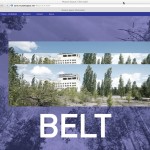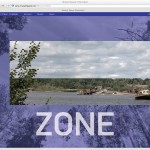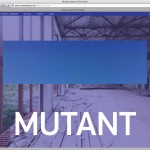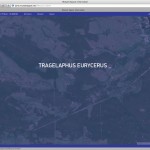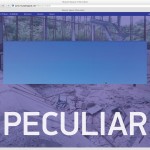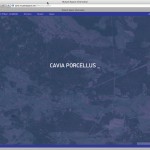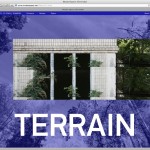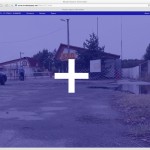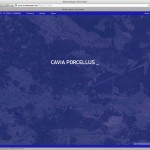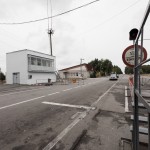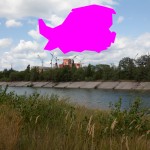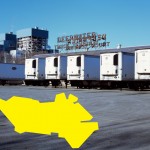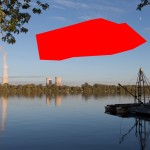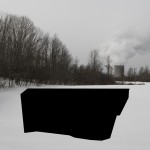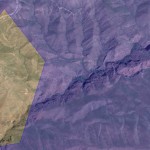ABSTRACT
Mutant Space is a large scope visual art project about nuclear power and radioactivity. Research consists of visual surveys around power plants and physics research and development on radioactivity. It aims at contemplating the politics of nuclear energy through artistic practice. It crosses over multiple forms of visual media and is embodied as installation, in online publications and as print material.
INTRODUCTION
An inspirational moment within the development of this project was visiting Chernobyl. The Ukrainian city was evacuated in 1986 due to the disaster at the Chernobyl Nuclear Power Plant, one of our first encounters with the subject in childhood via cold war mass media. The power plant was within Chernobyl Raion, but the city was not the home for the power plant workers. When the power plant was under construction, Prypiat, a town larger and closer to the power plant, had been built as home for the power plant workers, which today attracts tourists of ostalgie and ruin photographers. The catastrophe in 1986, turned into a spectacle as a sign of cold war, mythically spread to Europe, Asia and Anatolia regarding epidemiology. Today, the site is a temple of ostalgie.
Chernobyl area is restricted (from the visitors and for the visitors) by the Ukrainian government and admission process is very similar to entering a state from an airport or a highway. The space, which evoked indescribable pain and changed the ecological and political strategies of the cold war period, is now mutated and forfeited.
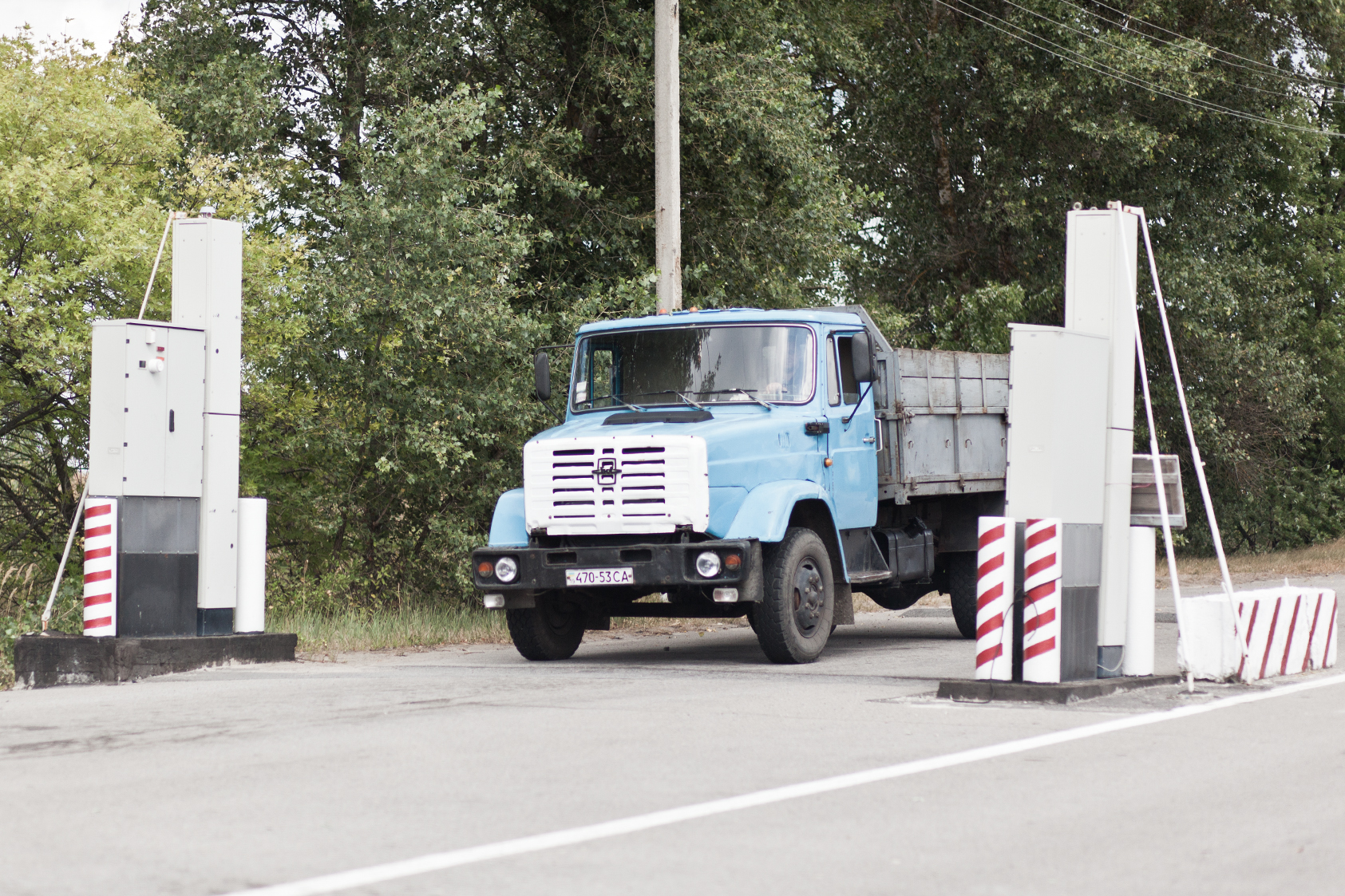
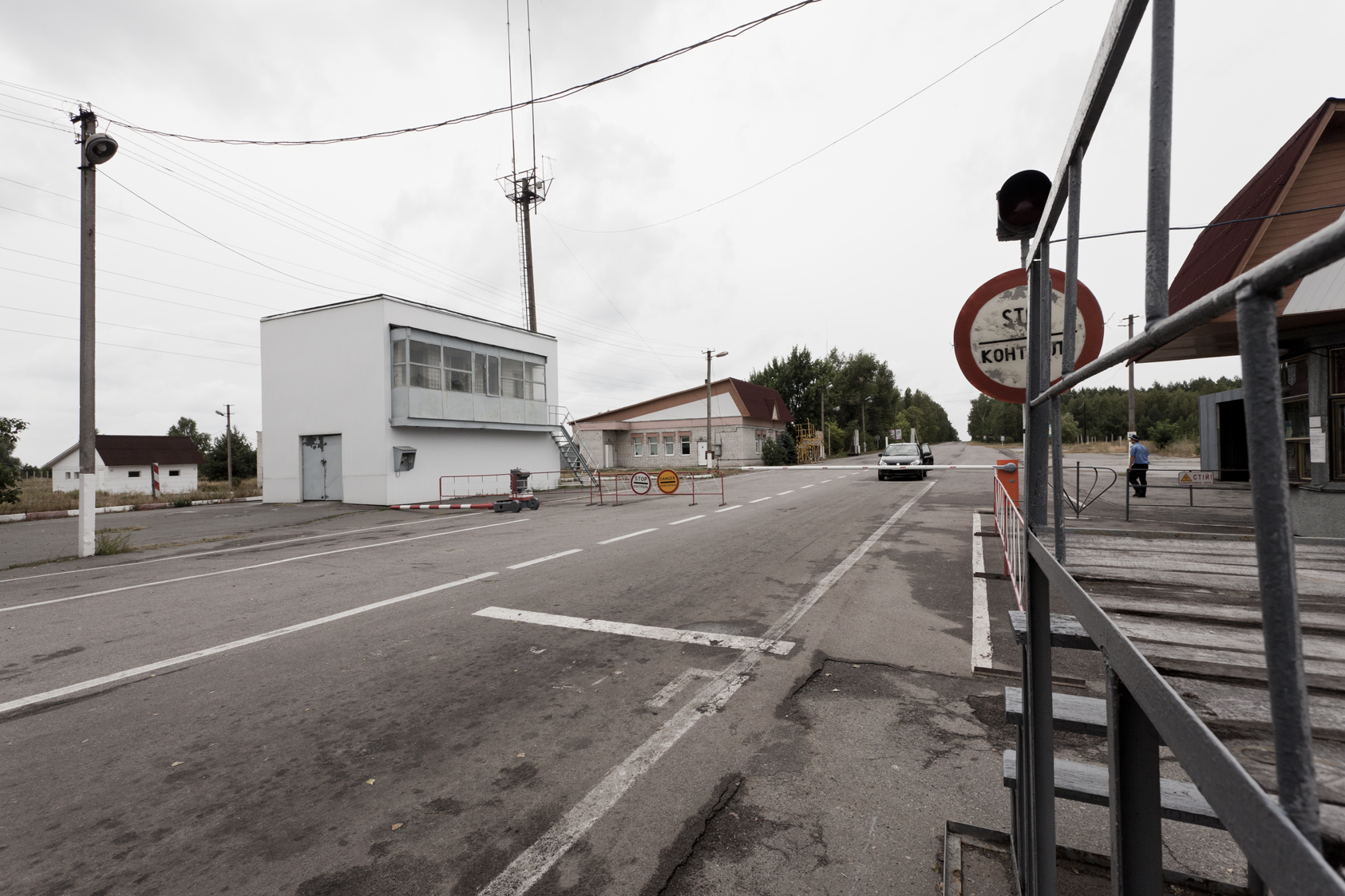
photographs from the entrance of Chernobyl region in Kiew, artist’s archive.
At that time we were also looking into the theories of Marc Auge concerning supermodernity and space, in which he uses the concept of supermodernity to describe a situation of excessive information and excessive space. Chernobyl and Pripyat was consisted of excessive amount of time and space. According to Auge, the individual entering the non-place is temporarily distanced from daily concerns by the environment of the moment and this anonymity provides a passive joy of identity-loss. This was the main motivation for us, with Can Pekdemir, to make this research trip to the ‘Zone’ in 2010. During the trip to Chernobyl area we could not help but thinking of visuals with reference to the plot of Stalker, 1979 science fiction film directed by Andrei Tarkovsky, with a screenplay written by Boris and Arkady Strugatsky. Also, Chris Marker, in his 1982 film Sans Soleil, may refer to Tarkovsky’s Stalker through the use of the term ‘Zone’ to describe the space in which images and their attached memories are transformed.
Mutant Space is an ongoing large scope research driven art project that comprises an installation along with online publications and printed matter. Its ongoing web component is online at: http://mutantspace.net
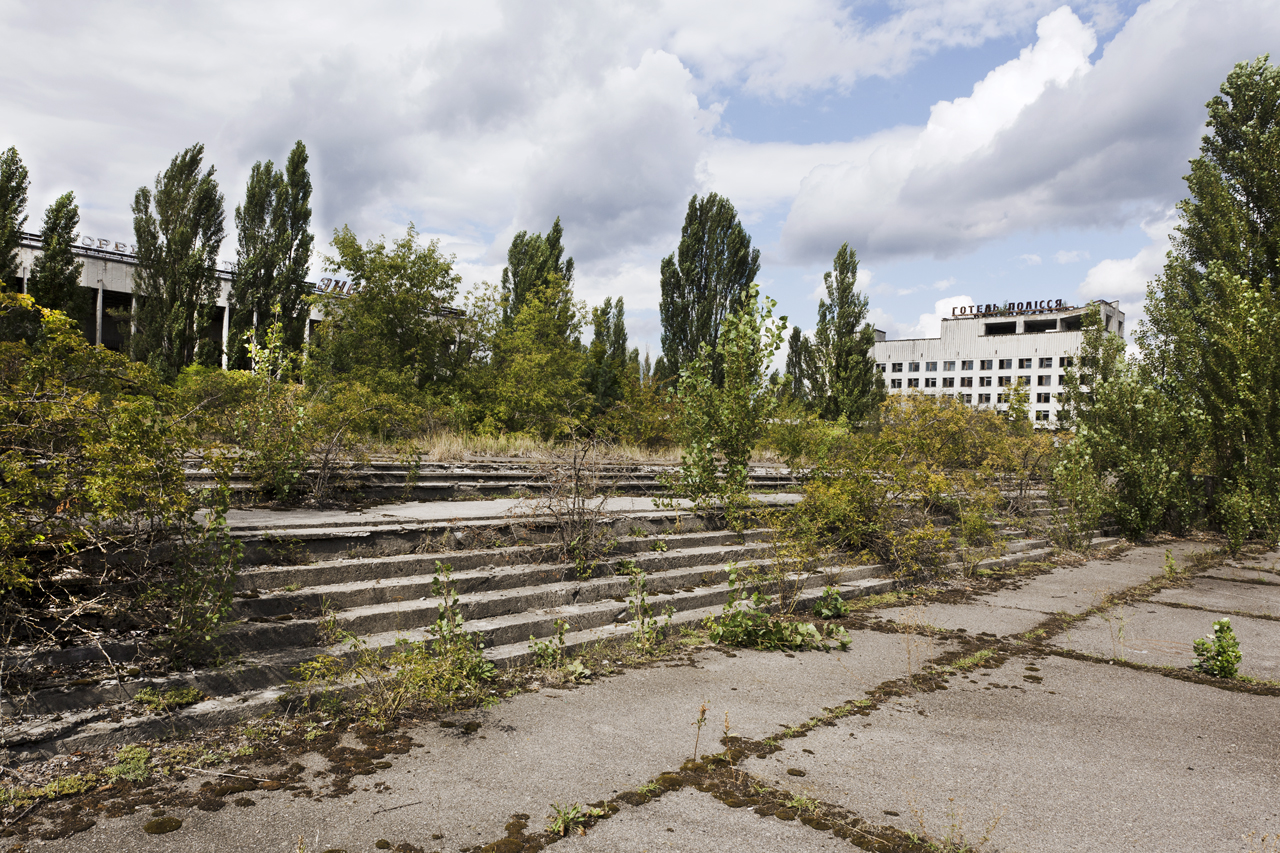
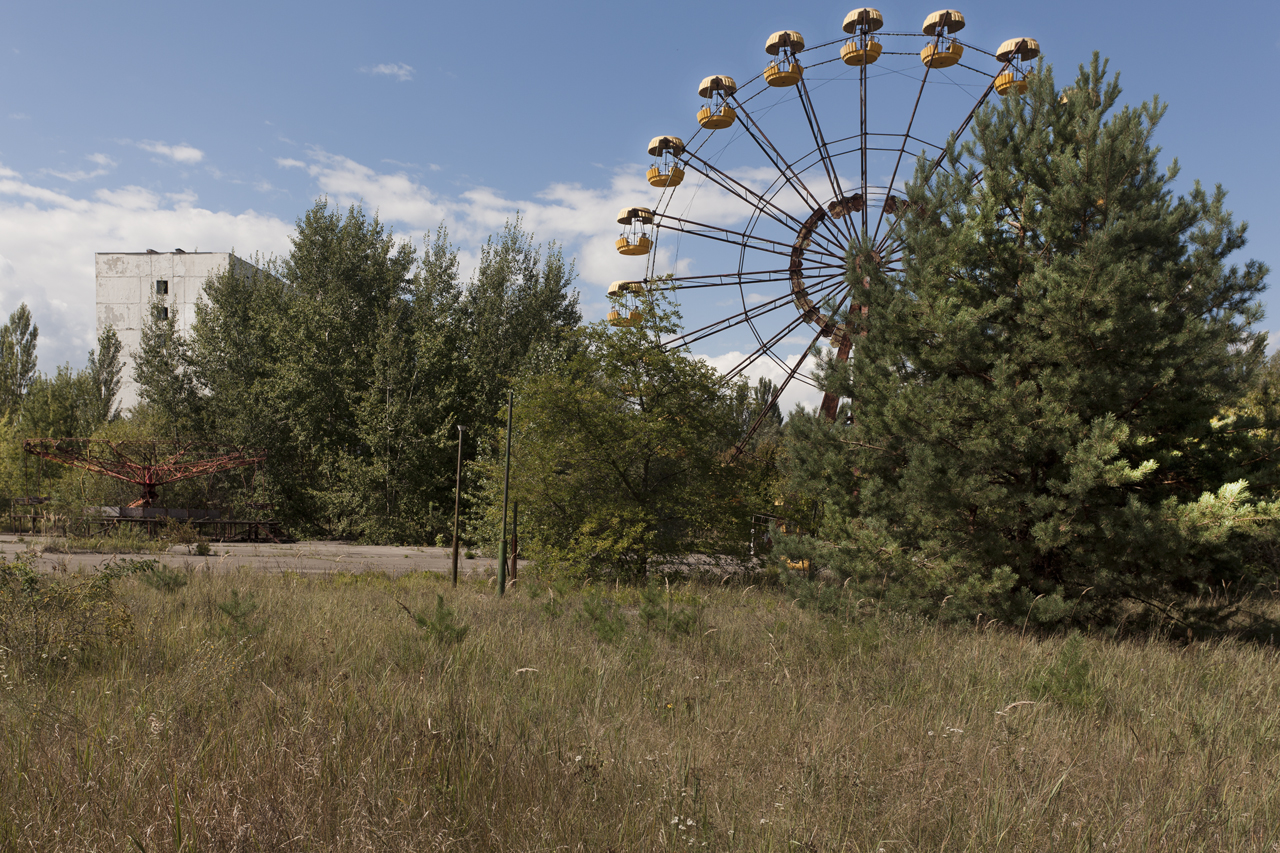
views from abondened city of Pripyat Chernobyl region in Kiew, artist’s archive.
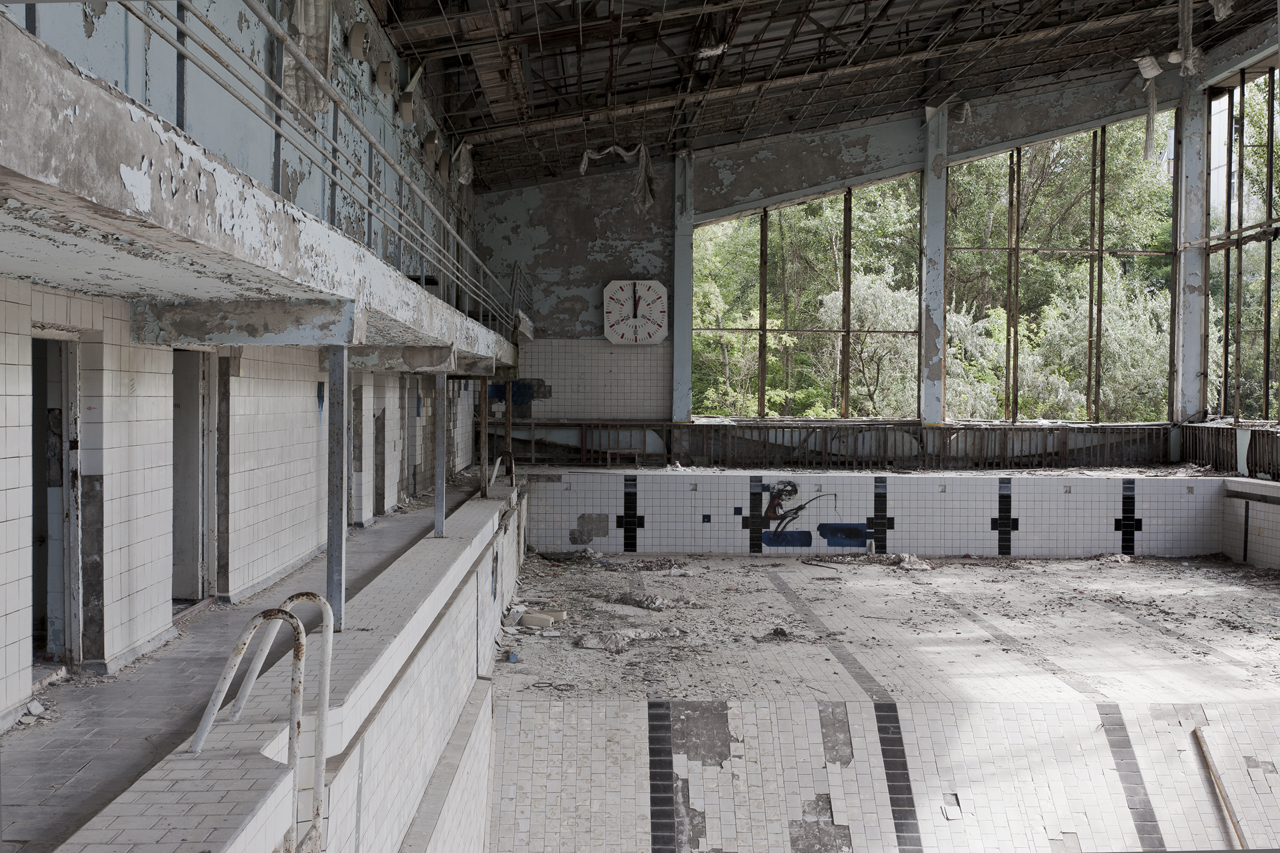
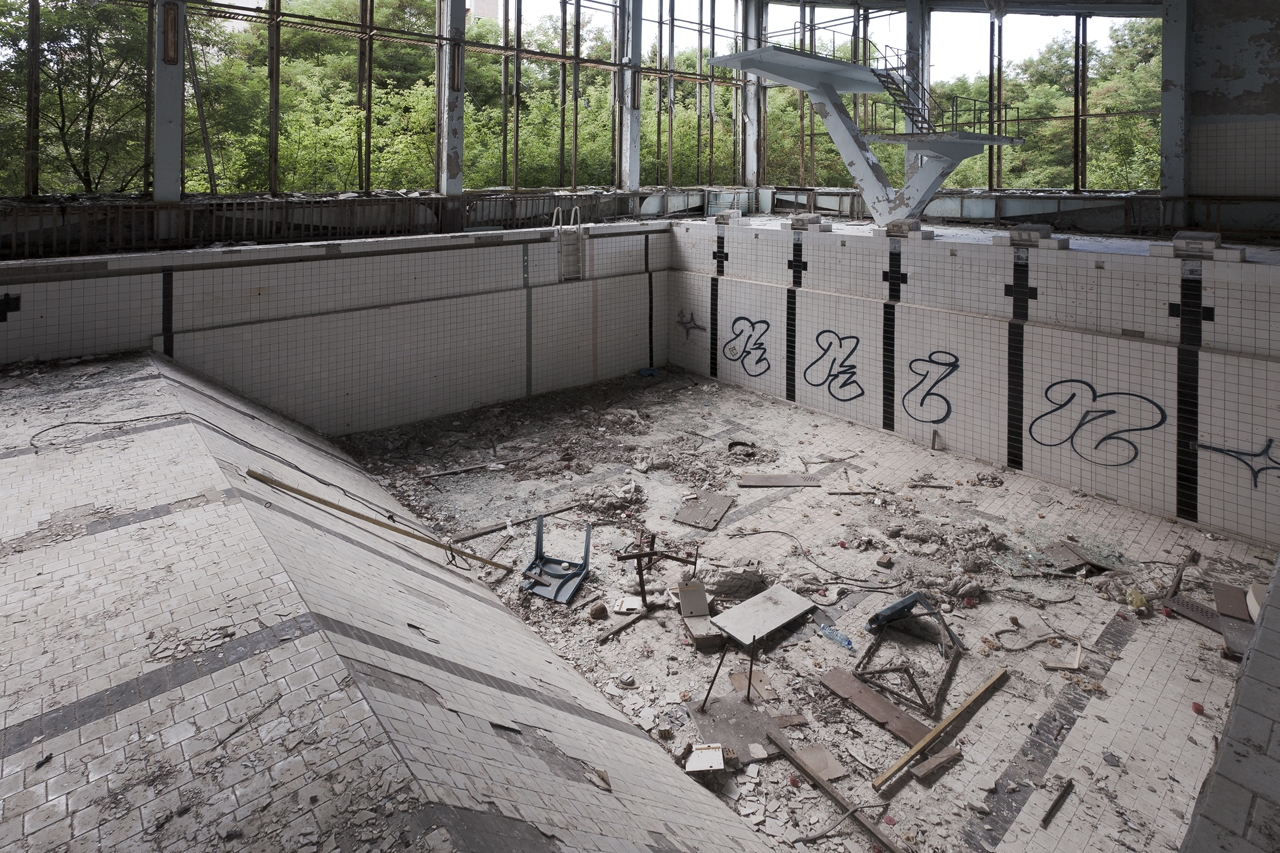
views from abondened city of Pripyat Chernobyl region in Kiew, artist’s archive.
By now there is a blog that hosts up-to-date news and commentary on the issues of nuclear power and radioactivity and ZONE: Mutant Space, Chernobyl is one of the online components of the project produced with the grant provided by Terminal, a space sponsored by the Department of Art and the Center of Excellence for the Creative Arts at Austin Peay State University.
screenshots from the .js based online work titled Mutant Space: The Zone. online at http://zone.mutantspace.net
MUTANT SPACE
Nuclear power and radioactivity are political in many ways. How to assess the dangers it poses? How should a non-scientist evaluate the risks? When and how to respond to an emergency, every moment, every action about it is political. Also, radioactive waste with half life more than a couple of hundred thousand years, and the way this information is conveyed to the future generations while humanity is incapable of deciphering a couple of thousand year old alphabets, is political. Contemporary art is one of the few surviving avenues of daily life which can genuinely host politics and art that deals with such political issues deserves to be on the scene.
“That is simple my friend: because politics is more difficult than physics.” So answered Albert Einstein, when asked why people could discover atomic power but not the means to control it. His thesis can still be applied to atomic energy which became more popular after his times. Mutant Space aims at demystifying technology with its lo-fi approach to research on physics of radioactivity. As will be further explained in the following section the installation component of this project combines good old radiation detection methods with today’s “high-end” data visualisation techniques. The installation contains the uranium element in its core as the driving source of the whole exhibition.
Chernobyl Nuclear Power Plant
Salem Nuclear Power Plant
Oswego Nine Mile Point Nuclear Stationo.
Oyster Creek Nuclear Generating Station
Three Mile Island Nuclear Generating Station
evacuation zone maps superimposed on large format photographs of nuclear power plants.
The project operates in various visual contexts such as installations in exhibition spaces and as online publications and in print. Particularly, the installation component of Mutant Space refers to the American installation art of 1960s. The systematic component driven and manipulated by the radioactive waste and its relationship to spatial perception is a direct reference to James Turell and closed recursive feedback mechanism can be thought as a radioactive and electronic version of Hans Haacke’s condensation cube. Its indebtedness to Haacke is not only a formal or structural one but it is also about how Haacke’s interest in real-time systems propelled him into his criticism of social and political systems.
Although this project is not in a direct conversation with other contemporary work that deals with radioactivity, still there are a number of artists and projects which can be mentioned. Smudge Studio’s “Repository: A Typological Guide to America’s Ephemeral Nuclear Infrastructure” project is exemplary to the research component of this project however Mutant Space aims at being less didactic in the way that the research is laid out. Robert B. Lisek as an artist who deals with systems and processes using the radioactive disintegration of Tor to create light-sound impulses. In his installation nuclear radiation is used as a random generator. Although the installation component of Mutant Space involves a similar technical infrastructure, the concept of the A/V component is mutation rather then randomness. Besides, in Mutant Space the installation component is just a metaphoric space to mark the visual representation of layers of research.
At a theoretical level, the installation piece, particularly the found waste and light component is directly related to theories of Timothy Morton on ecology and hyperobjects. He radically argues that the very idea of “nature” which so many hold dear will have to wither away in an “ecological” state of human society and approaches this paradox by considering art above all culture, politics, science, etc. In The Ecological Thought, Morton introduces the concept of hyperobjects to describe objects that are so massively distributed in time and space as to transcend spatiotemporal specificity, such as global warming, styrofoam, and radioactive plutonium. Among these Mutant Space is charged with radioactive hyperobjectivity in relation to ecologic and gallery space.
Mutant Space neither employs nor suggests any form of activism in the form of contemporary art.
Mutant Space is neither partial to any anti-nuclear movement nor takes part in the heated energy policy debates. Nevertheless, it will still be engaging for enthusiasts and critical thinkers of the subject matter.
evacuation zone of Metsamor Nuclear Power Plant, Armenia.
One of the archaeological sites that I visited in 2008 throughout a workshop trip to Yerevan was Metsamor, the “Black Swamp”, 50 kilometers west of Echmiadzin. We drove to Metsamor, with views across the fertile plain to the snows of Ararat and, topping seemingly endless lines of telegraph poles, untidy bundles of storks’ nests complete with their temporary residents, young and old. I vaguely remember seeing the cooling towers of the Metsamor nuclear power plant stand sentinel on the plain on the north of the site.
- Oswego Nine Mile Point Nuclear Station
views of Mount Ararat from Yerevan – Metsamor road, artist’s archive.
Metsamor power plant was temporarily closed in 1989 after the 1988 Spitak earthquake for safety reasons. However, economic and transportation blockades by Azerbaijan and Turkey, which created energy shortages in Armenia, caused the Armenian government to reopen the plant in 1993. The unit 2 reactor was brought back into operation on October 26, 1995. Nowadays, the Metsamor plant generates 40% of Armenia’s energy needs. And as announced by Armenia’s energy minister Armen Movsisyan, the reactor recently got a ten year extension to operate until 2026.
Metsamor is known as operating on the most insecure reactor still functioning on earth. One of the reasons for this insecurity is the location of the power plant. It is located on Mountain Ararat fault line. The following image displays all the earthquakes which have occurred over the magnitude of 6 within the area of the reactor since its construction.
Another part of the insecurity of this power plant is a more technical one. Like its counterpart Chernobyl, Metsamor does not have a container installed. In case of a meltdown in the core, there is no secure layer to contain the leaking core.
map of Metsamor Power Plant along with Turkey – Armenia natural and official borders
As an ongoing environmental issue, the reactor uses Arpacay and Aras rivers for cooling water and later dumps back the radioactively contaminated water to the rivers after use.
Noah’s Ark is one of the many cultural values shared by Turkish and Armenian societies. The Bible writes that it landed on the mount of Ararat. The history as it pertains to religious myths and political populism at a national level is re-written numerous times. All are stories, but the fact is that the Noah’s Ark has a great potential to come true as the end of the world for the people of the region in the future.
visualization of radioactive mobility of Uranium – 235 ore.
MUTANT SPACE, METSAMOR
Mutant Space, Metsamor is an exhibition proposal as a part of the ongoing Mutant Space Project. It will exhibit Metsamor and the region at large, its radioactivity by means of data visualizations, photographs, videos, maps and sensory information coming from local sources. The project will take chances to present information at local and global scale, such as panels or presentation sessions but most importantly online publishing. This aspect will engage local communities. I also believe that it will be well received in high-tech progressive art/design community.
floorplan for Mutant Space installation.
The form of Mutant Space, Metsamor is driven by its core content, which of course is radioactive material. The half-life of this material can vary from 24,100 years to millions of years, which is a fascinating idea to think about in the art historical context. Similarly, recycling of waste material in sculptural forms is a common practice in art. Mutant Space with its recursive, self enclosed mechanism articulates the waste in its core by creating a dynamic space.
One component of the project is a multimedia installation. It consists of photographic prints and fine art digital prints of data visualizations, sculptural form and a CAVE (Computer Aided Virtual Environment). The installation requires a gallery space of around 400 metres square (~4,500 sq.ft) and dry wall material. In the core of the installation is a sculptural lead structure, a container that contains radioactive waste at trace amounts. Geiger probes will be inserted inside this container. Gamma radiation emitted by the active material is detected by the Geiger counter. The measurement data will then be fed to the computer using I/O prototyping boards, possibly an Arduino board and this data is visualized to transform color and fed back to the system in forms of light that alter the perception of space.
The amount of the active material will be at trace amounts just enough to trigger the system. So the space will be safe for anyone. Just to give an idea, the risk of over exposure will be less than encountered in flight in an airplane cabin.
The sculptural form in the core which contains trace amounts of nuclear waste to be collected from the area represents a reactor core. The restless nature of this material and its real-time oscillations are sensed by the counter probes and fed to the computer as raw data in which it is processed to create videographic deformations and glitches. These video projections on semi transparent surfaces create a closed space which is visually mutated by the radioactive material. The print material on the walls are fine prints of large format photographs and maps superimposed with data driven graphics.
visualization of radioactive mobility of Uranium – 235 ore.
In summary, Mutant Space, Metsamor is a project that deals with containment, radioactivity, border, catastrophe, and archaeology. It employs scientific monitoring and imaging techniques as well as photographic/videographic documentation.
At a practical level, some aspects of this project (such as time, space and budget) are negotiable. Nevertheless, given that 2015 is the 100th anniversary of the Armenian Genocide, this is a remarkable year for the project to be realised. Also, taking the regional and cross border character of the idea into account, I believe the exhibition would make most sense at the foothills of the Ararat.
BIBLIOGRAPHY
Alexander, Peter. (1959) Atomic Radiation and Life. Penguin Books: London
Arevshatyan, Ruben. Schöllhammer, Georg. (Eds.) (2014) Sweet Sixties. Sternberg Press: New York
Auge, Marc. (2009) Non-Places: An Introduction to Supermodernity. Verso: London
Foucault, Michel. (1967) Of Other Spaces: Utopias and Heterotopias. [online]. Available at <http://web.mit.edu/allanmc/www/foucault1.pdf>, last retrieved January 15, 2015.
Hall, Jeremy. (1996) Real Lives, Half Lives: Tales from the Atomic Wasteland. Penguin Books Ltd.: London
Morton, Timothy. (2009) Ecology without Nature: Rethinking Environmental Aesthetics. Harvard University Press: Cambridge, Massachusetts
Morton, Timothy. (2013) Hyperobjects: Philosophy and Ecology after the End of the World. University of Minnesota Press: London
de Roulet, Daniel,. Waldman, Anne (2011) Fukushima Mon Amour. Autonomedia: New York
Weingart, John. (2001) Waste is a Terrible Thing to Mind. Center For Analysis Of Public Issues: New Jersey

